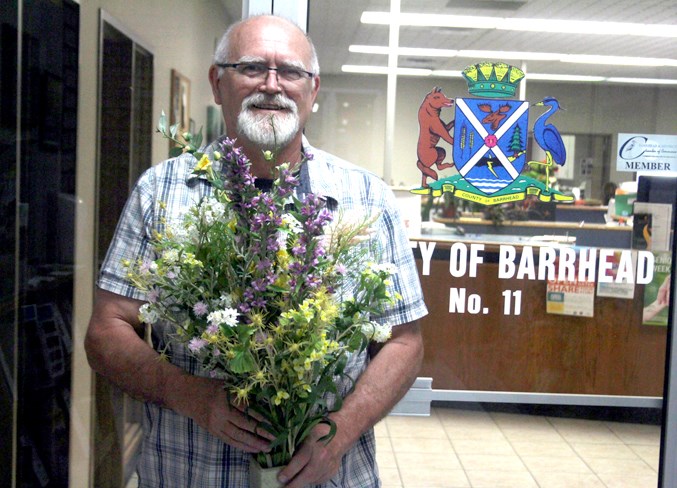With planting season upon us, there are some flowering species you shouldn’t put in the ground.
County of Barrhead assistant fieldman Jay Byer says there are a number of plants that are both noxious weeds and prohibited noxious weeds. For reference, the provincial government defines noxious weeds as plants that are known to cause detrimental effects to livestock, humans, crop production, or the environment. In addition, noxious weeds are those identified by the province, which are non-native invasive species and have seen elsewhere, not necessarily solely within Alberta.
“We are charged by the province to look at and control these varieties of plant species,” Byer said, noting there are a total of 75 individual plants on the noxious weed and prohibited noxious weed lists.
“Sadly, sometimes we find that the seeds at least, if not the whole plant, are brought in through wildflower mixes and we have been going around to the local greenhouses to check to see what they have brought in, to see if they contain any of these species.
“Just because they are called wildflowers doesn’t mean that we should be going about, scattering them throughout the riverbanks and what have you. It is never a good idea to spread wildflower mixes of any sort near riverbanks because there is often reduced competition there and these things can still take over even if they aren’t identified as either noxious or prohibited noxious weeds.”
Byer said none of the seed mixes found locally contain any of the plant species he advises against planting.
“That being said, it doesn’t mean they might not be in seed catalogues, particularly those imported from other parts of the province, country or the world in general. It happens more often than you’d think,” he said, adding it is strongly encouraged for people ordering through catalogues to insist on getting the weed species list from their supplier.
Byer said some of the more common troublesome varieties to watch out for include leafy spurge, field scabius, scentless chamomile, oxeye daisy, orange hawkweed, purple loosestrife, common toadflax, himilayan balsam, flowering rush, creeping bellflower, wooly wardock, tall buttercup and common tansy.
“If you have something you are concerned about, if you think it may be noxious, in your field or a neighbours, call us. We can investigate and appreciate the heads-up,” he said, noting there are fines and the potential for jail terms.
“While the threat of jail is almost never carried out, if a producer, for whatever reason, is unwilling or unable to control a noxious or prohibited noxious species, we do have the ability and the right to take over the management of your land and do whatever needs to be done. We’ll send you the bill afterwards and if you don’t pay it, it’ll get added to your taxes.”
Byer said there is no such thing as a grandfathered weed species.
“I don’t care if your great-uncle Bob brought it over from the old country a 100 years ago, if it’s on the list, it’s on the list,” he added.
For more information, contact the county at 780-674-3331.



